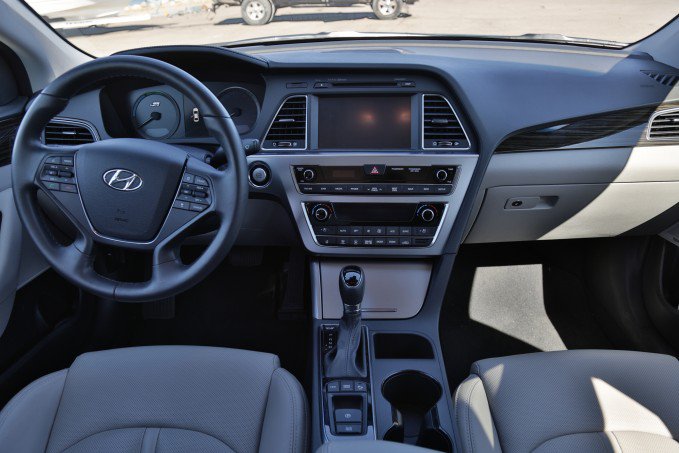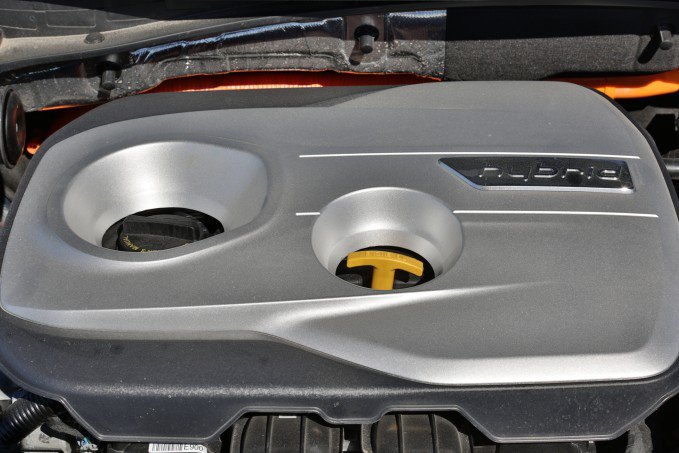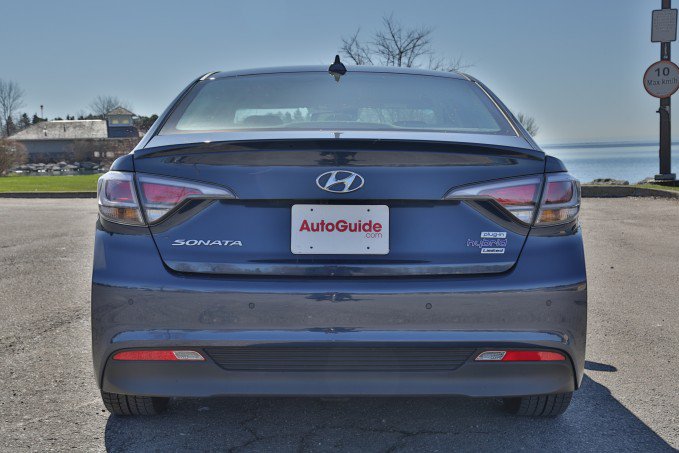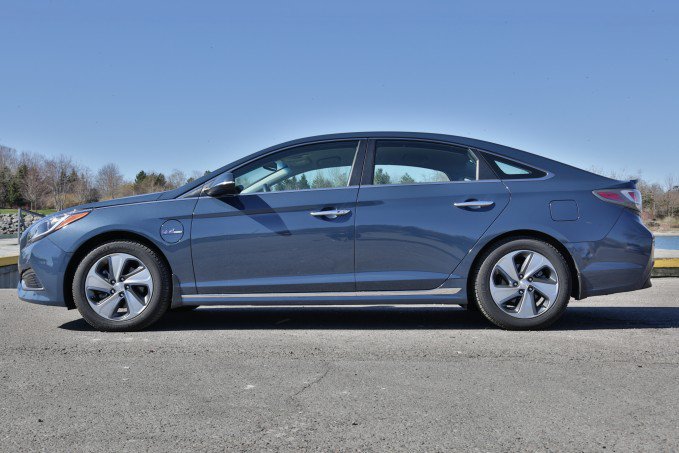Hyundai’s first plug-in vehicle is not a pet project or a limited-run experiment; it’s a fully fleshed out evolution of the traditional hybrid Sonata that offers an eye-popping 600 miles of range.
And while the Sonata Plug-in Hybrid is still based on Hyundai’s tried-and-true mid-sized sedan and not built from the ground up like the Volt and Prius, the Korean automaker still manages to make its green vehicle stand out.
Getting the basics out of the way, the Sonata Plug-in Hybrid looks nearly identical to its non-plug-in counterpart. There are a few updated badges, slightly revised bumpers and lights, chrome side sills and, of course, a charge port on the driver’s side front fender. There’s also a unique alloy wheel design, and plug-in Hybrids are available in four exclusive colors: Pewter Gray Metallic, Diamond White Pearl, Eclipse Black and Seaport Mist.
The interior also gets Plug-in specific updates, including a new gauge cluster that helps drivers indicate the battery’s state of charge. There’s a blue pearl leather interior option that features contrasting stitching, too.
Drive Modes
The biggest and most important change to the car’s interior is a button that changes how the Plug-in prioritizes how it saves fuel. A hybrid mode uses the gas and battery mode together, while an EV mode puts priority on utilizing the electric motor to its fullest and depleting the big battery before firing up the internal combustion engine. A third mode uses the internal combustion engine like a generator to charge the battery and can be activated by holding the HEV button. In addition to the different drivetrain modes, there’s a drive mode selector that modifies the steering and responsiveness of the car.
Unlike the normal Sonata Hybrid, there is no Sport mode, which is fine because the Plug-in feels more powerful than the normal Hybrid model. Total combined horsepower of the Plug-in is rated at 202 ponies, up nine from the Hybrid model, but the electric components of the Plug-in are more advanced. The slim lithium polymer battery pack of the Plug-in is now five times larger than its hybrid counterpart and the electric engine is 32 percent more powerful, too. Unlike other fuel-friendly cars, the Plug-in feels lively when pressed.
Paired to these electric components is a 2.0-liter four-cylinder engine that makes 154 hp. Unlike other hybrids that use a CVT or direct-drive transmission, the Hyundai uses a six-speed that is smooth, though eager to jump into the highest gear possible.
The car drives smoothly and quietly, and the EV mode is very responsive, which is impressive when you realize that the car weighs 3,800 pounds. Although weight is the enemy of efficiency, the Sonata Plug-in can still achieve 40 mpg when driven in its hybrid mode. Drive it as a plug-in, and it earns 99 mpg-equivalent (MPGe). All-electric range is 27 miles with total range (gas and electric) rated at 600 miles, which is huge. Driving dynamics are typical of the mid-size segment, which is to say it drives easily and sedately. It’s not razor sharp like the Mazda6 and skews closer to the Toyota Camry in terms of handling and comfort.
Like our experience in the Sonata Hybrid, the Plug-in is very refined, smooth and quiet. The transition from gas-electric hybrid mobility from pure EV is hardly noticeable and the regenerative brakes aren’t overly grabby. The bigger battery and more powerful electric components also mean that the car stays in EV modes longer and at higher speeds.
A few questions arise when it comes to the usability of the plug-in hybrid. I never needed a Level 2 charger installed in my home and the battery was fully charged when plugged in overnight. The next morning, the car could complete my commute to the AutoGuide.com office on pure EV mode without needing to fire up the internal combustion engine. On the way home, though, the battery gets depleted and the Sonata is running in hybrid gas-electric operation. While stuck in traffic, I set the car to charge mode, so that the second half of my commute home can be completed in EV mode. It worked out in my favor, helping me earn about 60 mpg during my week of driving.
ALSO SEE: 2016 Hyundai Sonata Hybrid vs 2015 Honda Accord Hybrid
Instead of a tachometer, the Plug-in Hybrid has a driving coach that indicates if you’re not driving in an eco-friendly way. Stay below a certain threshold and the car stays in EV mode and the range depletes in a reasonable manner. Go above that and your range will disappear quickly. The system is very helpful in making you a greener driver.
Features
A few extra driver assistance systems are standard on the Plug-in model, including blind-spot monitoring and a lane-change assistance system that can determine if a car is accelerating into the lane you’re signalling to move into. Additionally, there’s a lane departure warning system that lets you know if you’re drifting out of your lane unintentionally, and rear-cross traffic alert, which ensures you won’t back out of a parking spot if there are cars coming.
Other handy features include a ventilated driver’s seat to keep you cool and a heated steering wheel for those colder days. Adaptive cruise control with the capability to bring the car to a complete stop is also available. The Sonata Plug-in also has a hands-free trunk opening feature that triggers the opening of the trunk by detecting the key fob as you walk to the rear of the vehicle. Unfortunately, the full capability of the trunk is limited by the extra electric gear, so cargo capacity is rated at just 9.9 cubic feet.
Charging the electric battery takes under three hours with a Level 2 charger or nine hours with a standard Level 1 charger.
The Verdict: 2016 Hyundai Sonata Plug-In Hybrid Review
The Hyundai Sonata Hybrid Plug-in has a killer feature, and that’s the 600-mile total range. That alone sets it apart from other hybrids and green cars. Not just a toy or proof of concept, the Sonata Plug-in Hybrid is fully featured. The car is still limited to some markets, although they are ones that offer hefty rebates. Residents of California, Connecticut, Maine, Maryland, Massachusetts, New Jersey, New York, Oregon, Rhode Island and Vermont can get at least $4,500 in federal and state rebates, which help the car earn its keep.
Discuss this story at our Hyundai Forums












